Saladin armored vehicle British company Alvis
Saladin armored vehicle manufactured by Alvis Limited
In January, 1946, the British army issued a requirement for a new armored vehicle, which was to replace the armored vehicles Daimler MkII 4x4 and AEC MkIII 4x4, developed during the Second World War.
Design work on the new machine, designated FV601 (A), began in the same year in the Department for the development of combat vehicles. Then the Department was renamed the research institute for the development of combat vehicles, and later, the Royal Arms Research Institute Chertsey. This institute is currently closed.
As originally assumed, the FV601 (A) was supposed to have a crew of four people and should be armed with an 40-mm gun equipped with a Littlejohn adapter to increase the initial velocity of the projectile. But in February, the 1948 of the year, it was decided that this gun was not powerful enough, and therefore the weapons design bureau started the development of the new L76 5-mm cannon, which was developed right up to the 1953 of the year.
In 1947, Alvis Limited in Coventry was awarded a contract for the manufacture of two prototypes of FV601, which were built only in 1953. The first mockup with the 40-mm gun was made in 1948 year.
In parallel with the manufacture of prototypes FV601, Alvis also engaged in the manufacture of armored personnel carriers FV603, which ultimately received the name Saracen.
Since Saracen was urgently needed for the operation in Malaya, it was decided to concentrate on this machine and therefore the manufacture of six pre-production machines FV601 (B) was transferred to Crossley Motors from Stockport.
The production of the FV601 machines (B) was completed in 1955, they differed from the prototypes in a slightly different shape of the turret, as well as other observation equipment and other design of the commander’s and gunner’s hatches.
Production of the Saladin armored vehicle was approved in 1956, after which production at the Alvis plant in Coventry began in 1958, and the first deliveries of the British army were made the following year. Production continued until 1972; A total of 1177 machines were manufactured.
This vehicle in the British army was subsequently replaced by the Scorpion CVR (T) tracked vehicle, which was armed with a new lightweight version of the Saladin 76-mm cannon, which had the designation L23. The Saladin armored vehicle has the official designation FV601 (C) Armored Car (Alvis Saladin Mk 2 6x6).
Subsequently, the Saladin armored vehicle was replaced in all units of the British army with a Scorpion CVR (T) tracked vehicle. It should be noted that the basic version of the CVR (T) armed with an 76-mm gun was removed from service with the British army. Other cars of the CVR (T) family are still in service with the British army.
Production of all armored vehicles of the FV600 6x6 series was carried out at the plant of Alvis Vehicles in Coventry, which was closed in 1999 year. In 2002, Alvis merged with Vickers Defense Systems, resulting in a company with a new name Alvis Vickers Limited.
In 2004, Alvis Vickers joined the defense giant BAE Systems. After this, the only armored combat vehicle factory in Newcastle upon Tyne remained in the United Kingdom.
In the end, after the production of the Terrier’s engineering vehicle for the British Army, this plant was sold to Pearson Engineering.
Saladin’s all-welded armored vehicle body is divided into three compartments: the driver’s compartment in front, the combat compartment in the center and the power unit in the rear. The hull and turret are all-welded, made of armored steel and have the highest level of protection in a frontal arc.
The driver is located in the front and has a one-piece manhole cover, leaning forward on the frontal sheet to improve visibility. The driver has three daily periscopes, one in the hatch and one on each side of the driver's seat.
The tower is installed in the center of the hull, in it the gunner-gunner is located on the left, and the commander, who also performs the duties of the loader, is on the right; each has a solid manhole cover opening back. The commander has four day periscopes in a circle in front of the hatch and one rotating periscope in the back.
The shooter has one day periscope installed in front, the lower part with x6 magnification for fire control, and the upper part without magnification for observation.
On the left side of the tower, immediately after the gun mask, there is a fan for suction of powder gases. There is a small rectangular hatch for observation in the rear part of the combat compartment immediately below the support ring of the tower. There are side access hatches on each side of the tower under the support ring.
The engine compartment in the rear part of the hull is separated from the habitable compartment by a bulletproof partition and equipped with a fire detection and extinguishing system. The last function is activated by the driver.
The air in the engine compartment is sucked in by two fans through a louvered grill with six slots and then passes through the radiator and out through the grill at the very end of the casing.
The engine is connected to the hydraulic clutch Daimler, and that in turn is connected to the epicyclic gearbox with a preselective inclusion, which transmits power to the transfer case, consisting of a conical and helical gear, including reverse and differential, which allows to get the gear used in both directions.
The suspension of each wheel consists of upper and lower rods, the upper rod is attached to the longitudinal torsion shaft, which, with its splines, enters the pipe, which in turn is fixed to the body. Hydraulic booster steering first and middle wheels.
The design of the Saladin armored vehicle does not provide for the installation of a system for protection against weapons of mass destruction and night vision devices.
The main armament of the Saladin armored vehicle consists of an 76-mm L5A1 cannon with a vertically sliding bolt mechanism and a hydraulic spring-loaded recoil mechanism.
Saladin armored vehicle with open hatches for driver, commander and gunner
The 7,62-mm machine gun M1919A4 (L3A3 / L3A4) is mounted with the gun coaxially to the left; the same machine gun is installed to the right of the commander's hatch. On the sides of the turret, six 66-mm smoke grenade launchers are installed.
The 76-mm cannon can fire with the following types of ammunition: cluster, armor-piercing high-explosive projectile with crushable head part, high-explosive fragmentation, fragmentation-high-explosive practical, practical projectile with crushable warhead, smoke and lighting.
The 42 mm 76 rounds are vertically mounted: 11 between the commander and the shooter, 12 on the left, 11 on the left behind the driver and 8 on the left in the stern.
Modernization of the Saladin armored vehicle
In 1991, it was announced that AF Budge Limited and then Alvis Vehicles Limited had developed a Saladin armored vehicle retrofit kit. The existing gasoline engine was replaced by a diesel engine company Perkins Engines Company 180 MTi horsepower 180 hp.
The chassis was also upgraded with a modern cooling system, a new electrical system, upgraded brakes, fire detection and fire suppression systems, and a more modern automatic transmission.
Installing a diesel engine requires minimal engine room modifications, but offers advantages in the form of increased reliability and simplified maintenance, reduced fuel consumption, increased power reserve and reduced risk of fire.
The retrofit kit was tested in an Asian country with the upgraded Saracen 6x6 armored personnel carrier, while the Stalwart vehicle with the same power unit underwent evaluation tests in the UK.
In May, 1994, Alvis Vehicles announced that it had received a contract worth 10 million dollars to supply retrofit kits for Saladin, Saracen and Ferret from an unnamed Asian country, but most likely Indonesia. The delivery of the kits has been completed and BAE Systems no longer offers them on the market.
Specifications armored Saladin
Crew: 3
Overall length: 5,284 m
Enclosures: 4,93 m
Width, overall: 2,54 m
Height
overall: 2,39 m
on the roof of the tower: 2,19 m
Axial line of the gun: 1,854 m
Ground clearance: 0,426 m
Track: 2,038 m
Wheel base: 1,524 m + 1,524 m
Weight
standard: 10500 kg
combat: 11590 kg
Ground pressure: 1,21 kg / cm2
Configuration: wheel, 6x6
Power density: 14,66 hp / t
Maximum speed: 72 km / h
Cruising range: 400 km
Fuel Capacity: 241 Liter
Entry angle: 60 °
Departure angle: 50 °
Rise: 46%
Wall: 0,46 m
Trench: 1,52 m
Turning radius: 7,31 m
Engine: Rolls-Royce B80 Mk 6A, 8 cylinders, petrol, hp 170 at 3750 rpm
Gearbox: semi-automatic
Steering: screw driver with ball nut, with hydraulic booster
Тормоза
basic: disc, hydraulic, on all wheels
parking: mechanical, on all wheels
Wheels: 12.00 xR20
Suspension: independent, double wishbones torsion bar, hydraulic shock absorbers
Electrical system: 24 volts
Batteries: 2 x 12 volt, 60 Ah
Armament:
76-mm rifled gun L5A1
7,62-mm coaxial machine gun L3A3 / L3A4
7,62-mm coaxial machine gun L3A3 / L3A4 on the roof of the tower
12 x 66-mm launchers (2 x 6)
Ammunition
gun: 42
coaxial machine gun: 2750
7,62 machine gun: 2750
Tower Drives: Electric / Manual
Commander: have
Do arrow: have
Tower rotation: 360 °
Vertical gun pointing angles (forward): + 20 ° / -10 °
Gun Stabilization: No
Range finder: yes
Night vision devices: no
The system of protection against weapons of mass destruction: no
Reservation
body: steel 16 mm (maximum thickness)
tower: steel 32 mm (maximum thickness)
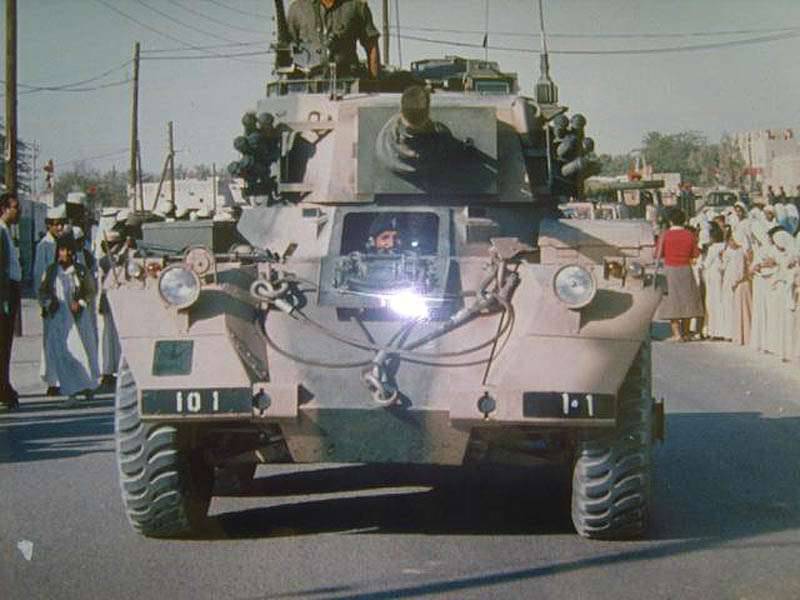
Saladin armored vehicle of the Omani army
The production of the Saladin armored vehicle has been completed. It is in service with the following countries: Algeria (49), Bahrain (8, reserve), Honduras (40), Indonesia (69), Jordan (40, police), Lebanon (25, reserve), Mauritania (10), Nigeria (20), Sri Lanka (15), Sudan (30/50), Tunisia (24) and UAE (20, reserve).
Materials used:
www.baesystems.com
pl.wikipedia.org
www.thaiembassyuk.org.uk
www.defencetalk.com
www.militaryfactory.com
www.army-guide.com
www.wikipedia.org
en.wikipedia.org
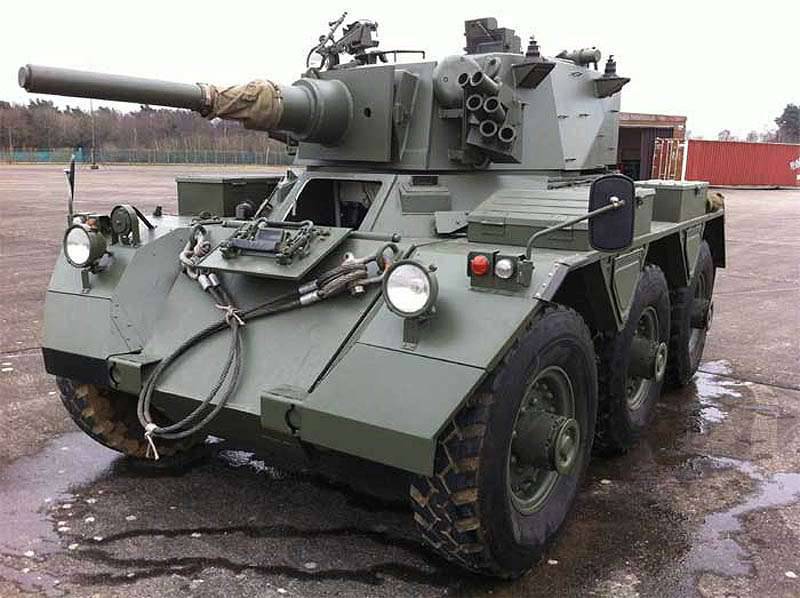
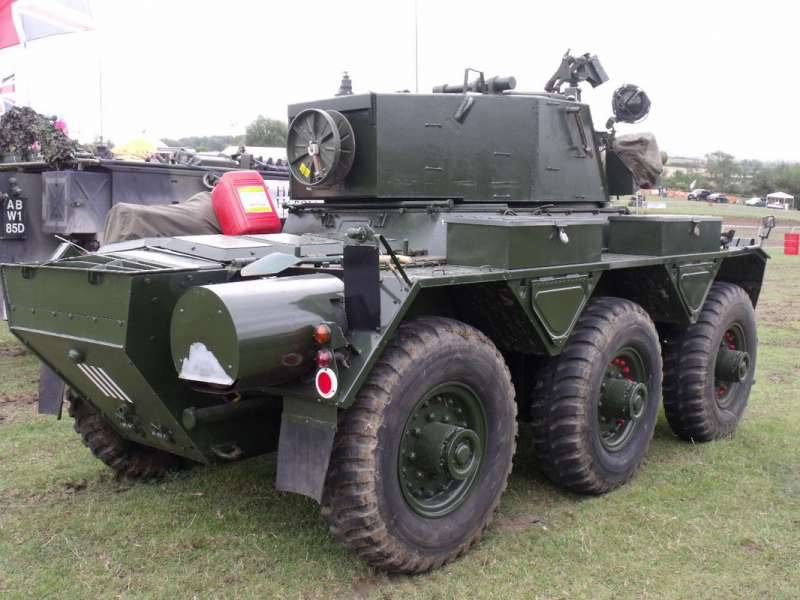
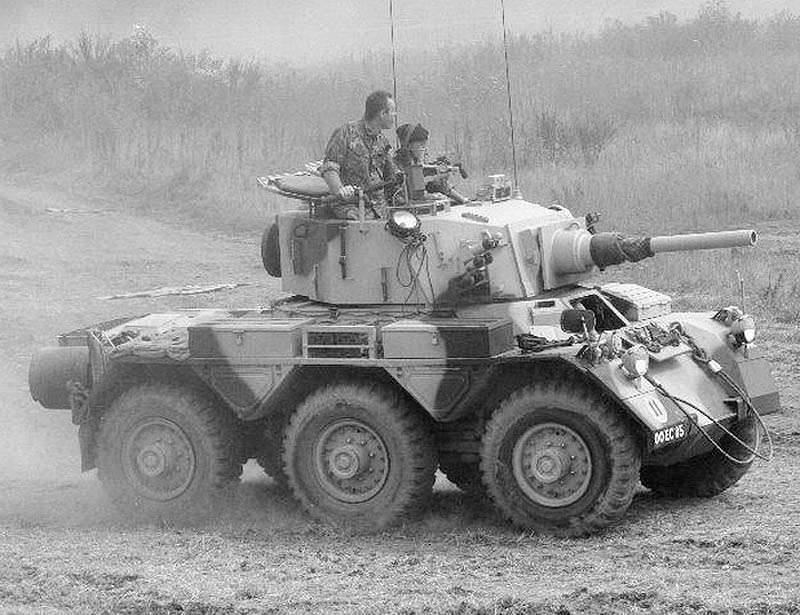
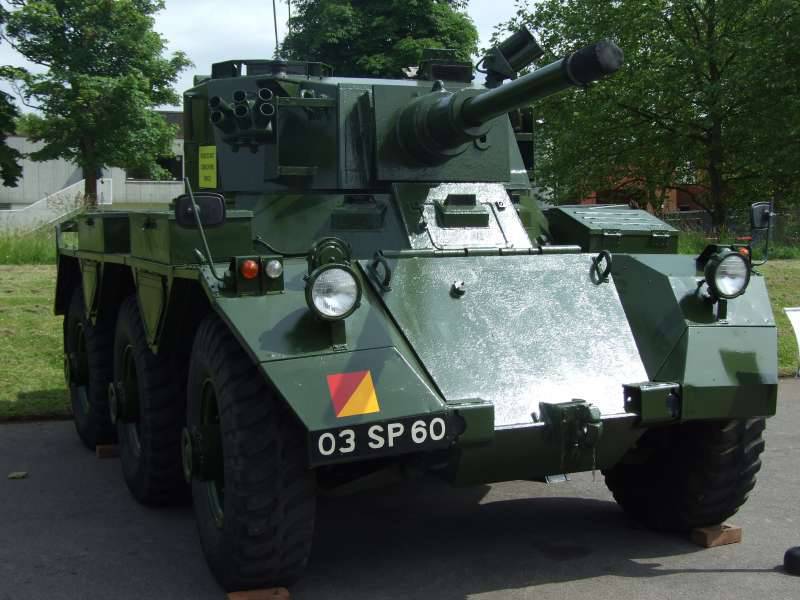
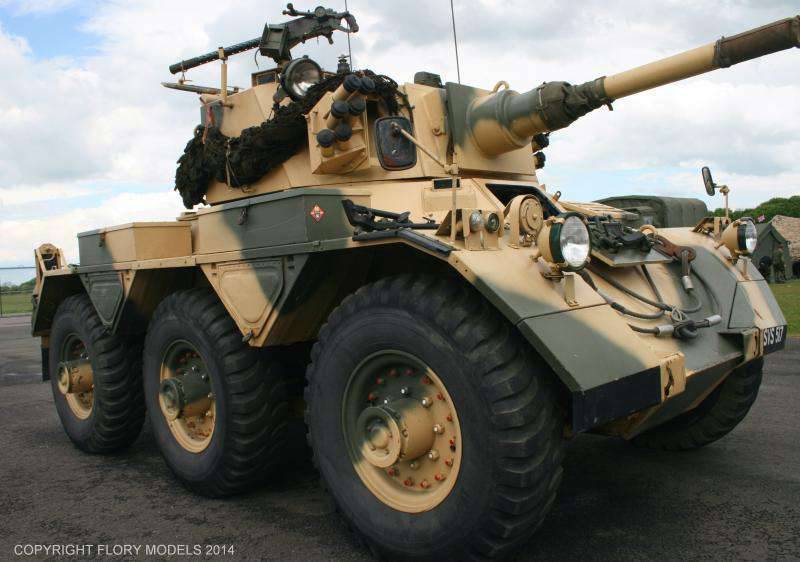
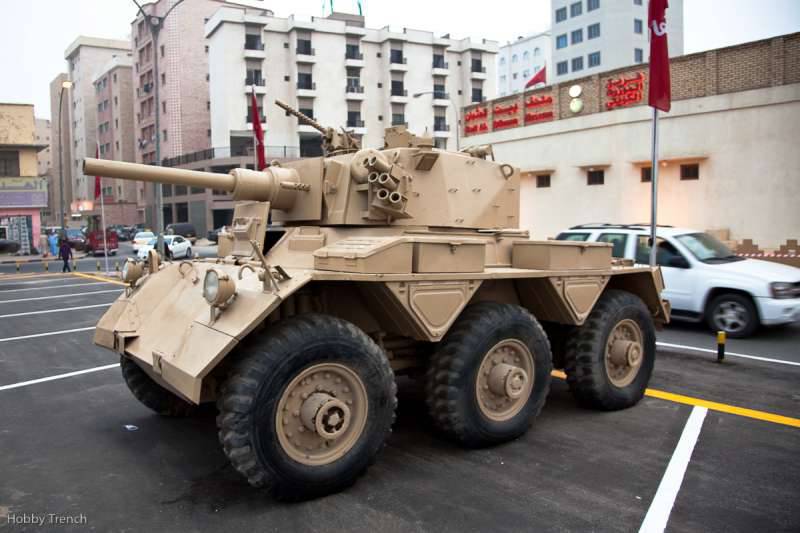
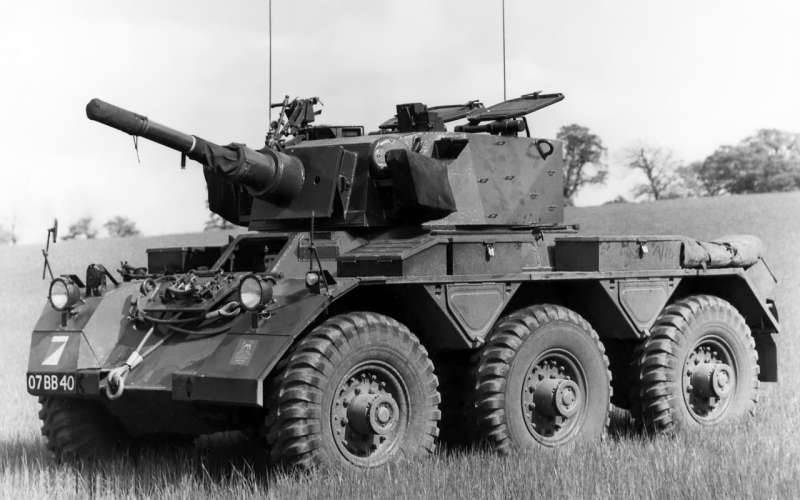
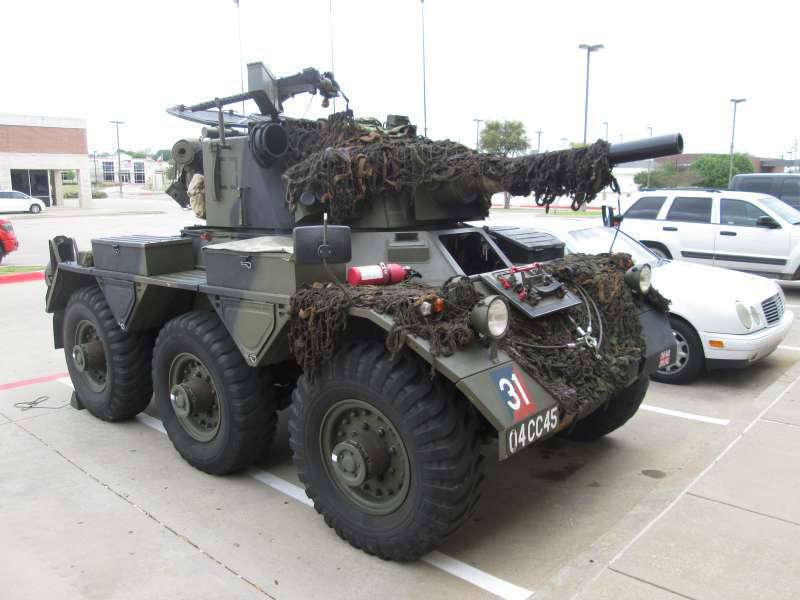
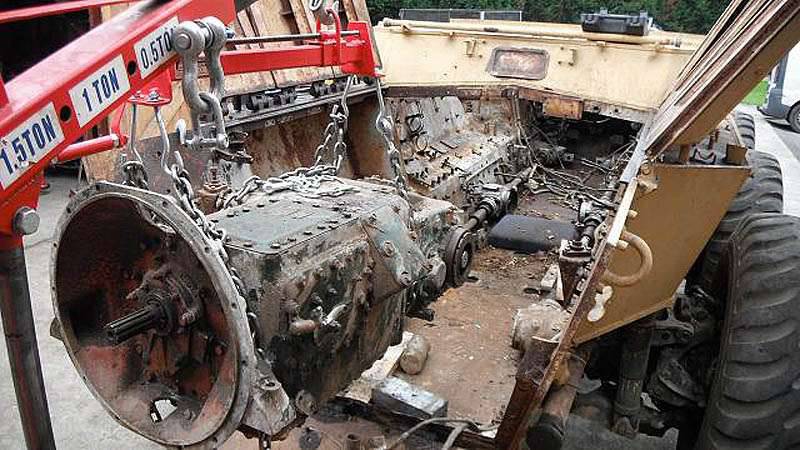
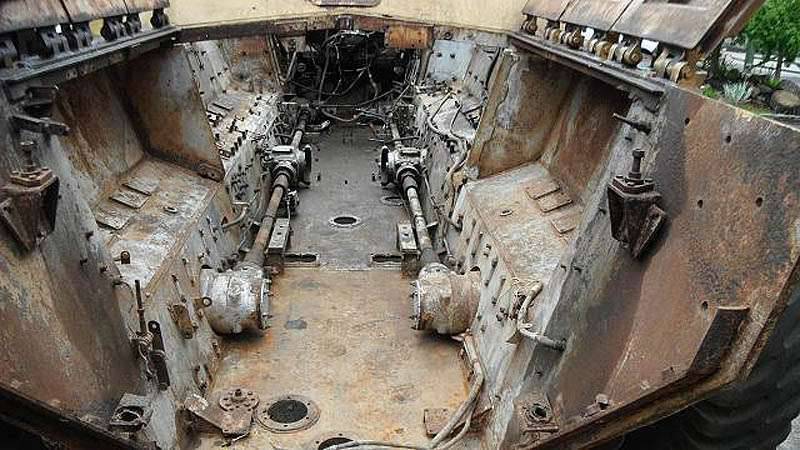
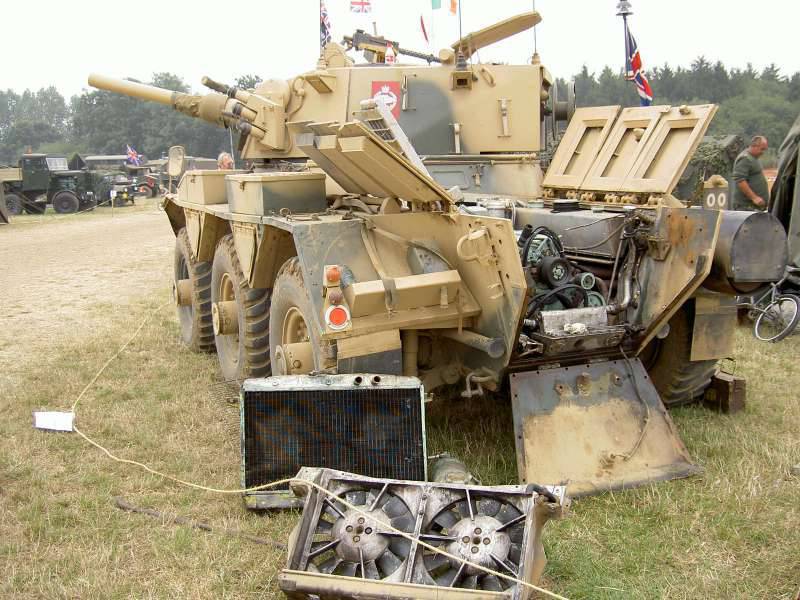
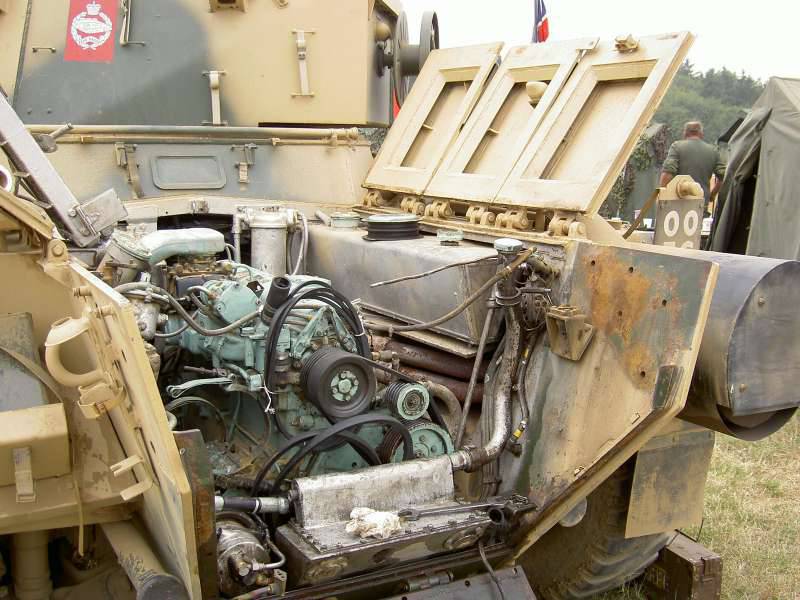
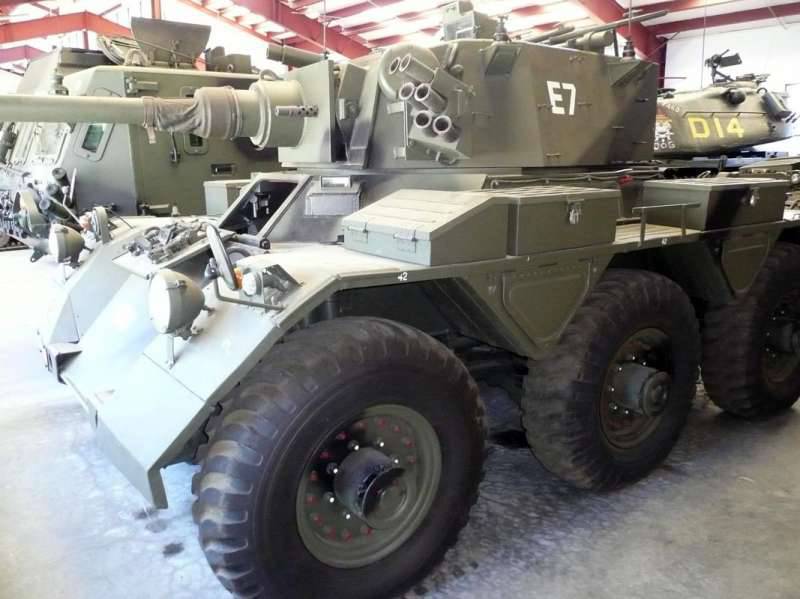
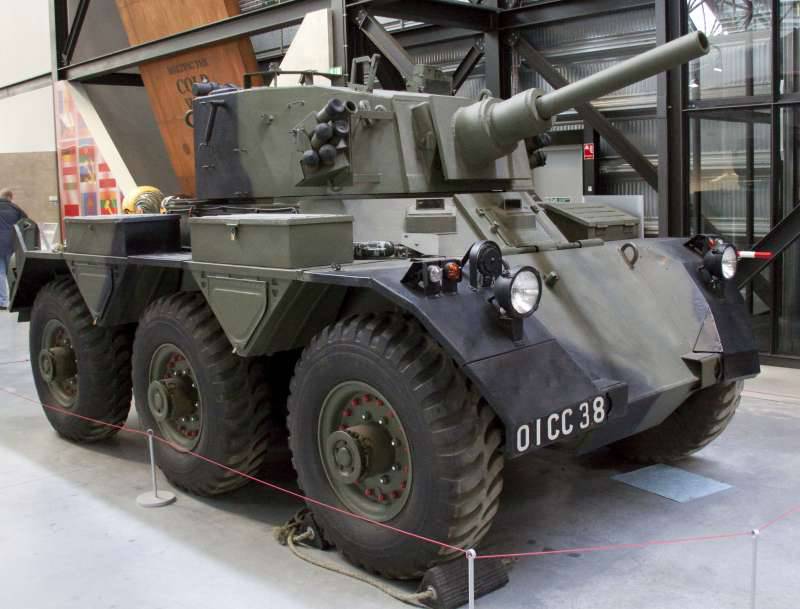
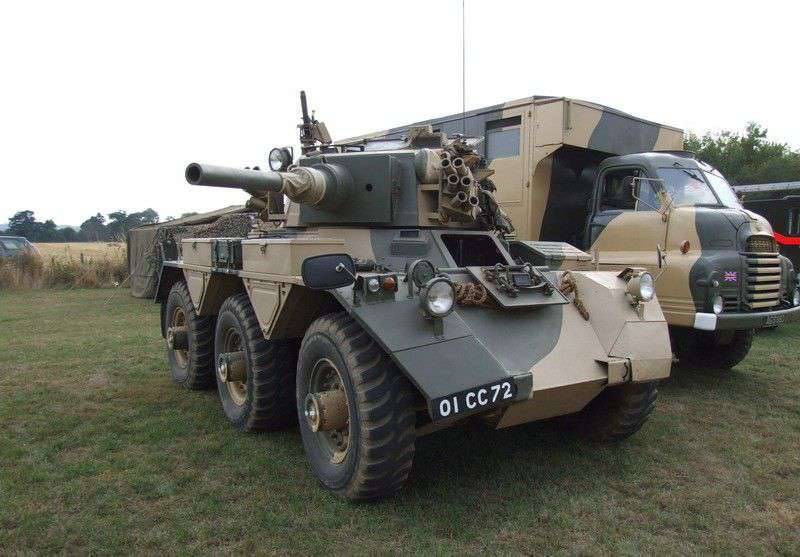
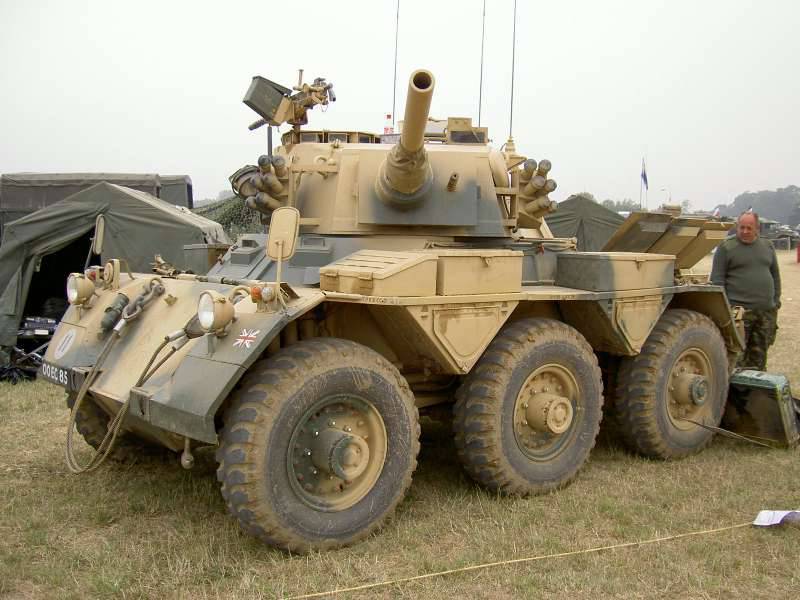
Information